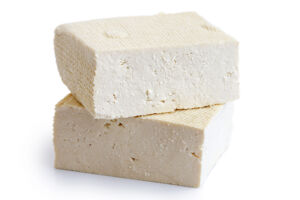Soy is everywhere – which can pose a problem for those with a soy allergy. You may be at a higher risk of a soy allergy if other allergies run in your family, or if you are allergic to wheat, milk, or other legumes (most commonly, peanuts). An estimated 1.9 million Americans are allergic to soy. It is also one of the most common allergens for infants and young children (along with milk allergy, egg allergy, and peanut allergy).
Soy allergy develops when the immune system has an adverse reaction to soy protein. Once the body comes into contact with soy, a series of IgE antibodies are released in an attempt to fight off the soy protein. These antibodies then initiate an allergic reaction, marked by a wide range of mild to severe symptoms. See below for an overview of common soy allergy reactions, foods to avoid, and how to diagnose – and treat – a soy allergy.
Symptoms of a Soy Allergy Reaction
An allergic reaction to soy may appear as quickly as within minutes of eating soy. In some cases, an allergic reaction may take hours to show symptoms. While each patient may experience varying symptoms of a soy allergy reaction, the most common include:
-
- Hives or rash
- Itching
- Swelling in the lips, tongue, mouth, throat, or around the eyes
- Nasal congestion
- Wheezing or shortness of breath
- Nausea or vomiting
- Abdominal pain or discomfort
- Diarrhea
- Dizziness
Soy allergy may trigger a severe allergic reaction, which can result in anaphylaxis. Without immediate treatment, anaphylaxis can be a serious, life-threatening event. Anaphylaxis causes the body to go into shock, and can result in symptoms such as:
-
- Pale or bluish tint on the skin
- Throat constriction
- Shortness of breath
- Difficulty breathing
- Confusion and/or dizziness
- Fainting or loss of consciousness
- Weak, rapid pulse
If you suspect that you or someone you love may be experiencing anaphylaxis, medical care must be sought immediately. Anaphylaxis is a medical emergency, and must be treated with epinephrine. Those who have a severe soy allergy should always have two epinephrine auto-injectors on hand to deliver rapid treatment in case of accidental ingestion.
Soy Allergy Testing and Diagnosis
Diagnosing soy allergy can be tricky. Symptoms of a soy allergy reaction may appear in a variety of ways and bodily systems, such as on the skin, in the cardiovascular system, the gastrointestinal tract, and even the respiratory tract. In many cases, a soy allergy can be misdiagnosed as a sensitivity or intolerance, which can create a severe health risk.
Getting an accurate clinical diagnosis can not only help patients properly treat their food allergy, but it can also improve quality of life by relieving stress and ensuring appropriate dietary restrictions. Food allergy testing and diagnosis for soy allergy can include three methods:


 Any soy-based foods will fall under this list as well, such as soy cheese, flour, nuts, soy milk, soy yogurt, soy ice cream, or sprouts. Soy may also show up in unexpected foods, such as grains, desserts, and frozen entrees. Patients who have been diagnosed with a soy allergy must pay close attention to ingredient labels for the following:
Any soy-based foods will fall under this list as well, such as soy cheese, flour, nuts, soy milk, soy yogurt, soy ice cream, or sprouts. Soy may also show up in unexpected foods, such as grains, desserts, and frozen entrees. Patients who have been diagnosed with a soy allergy must pay close attention to ingredient labels for the following: